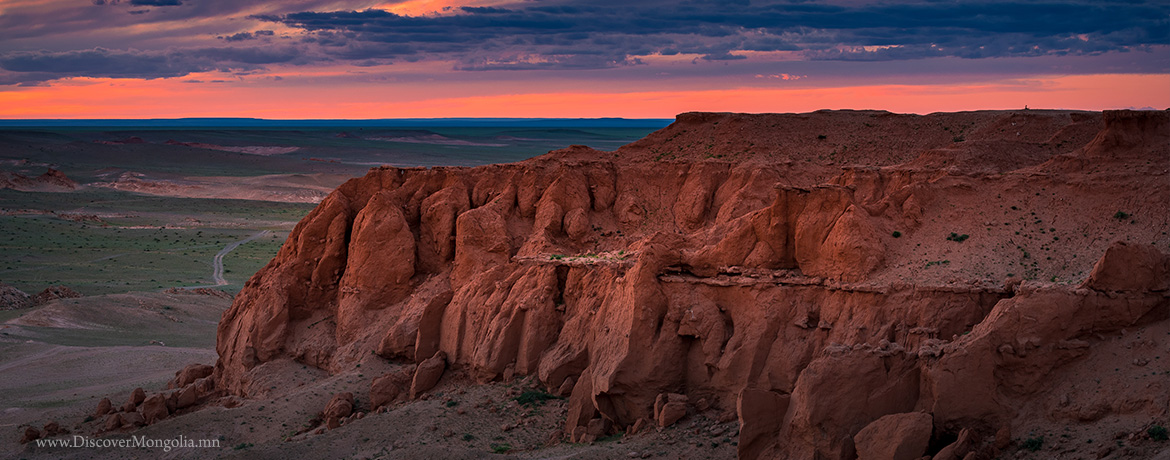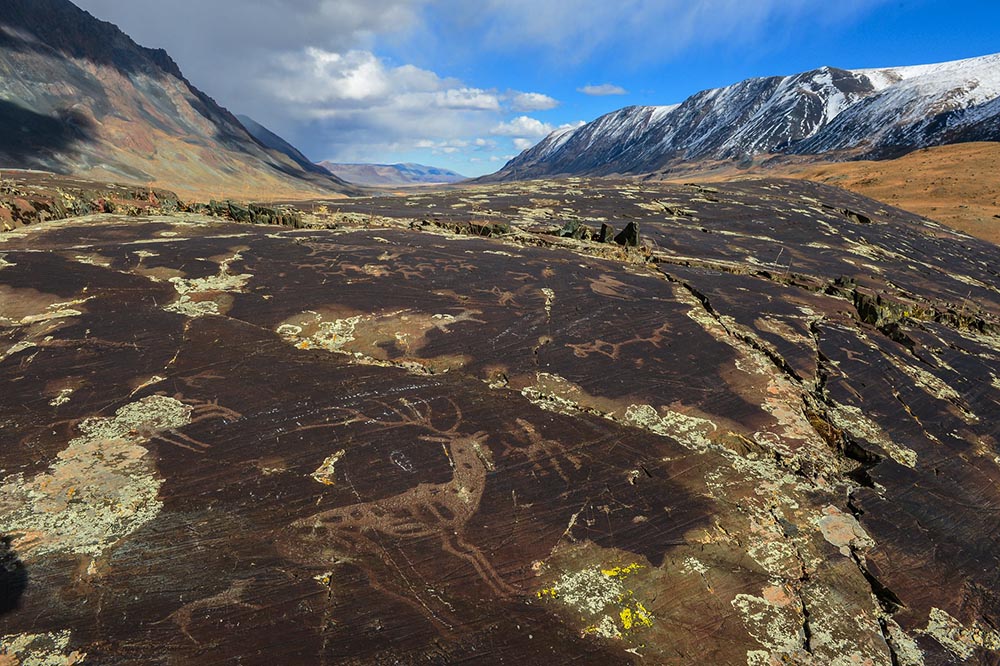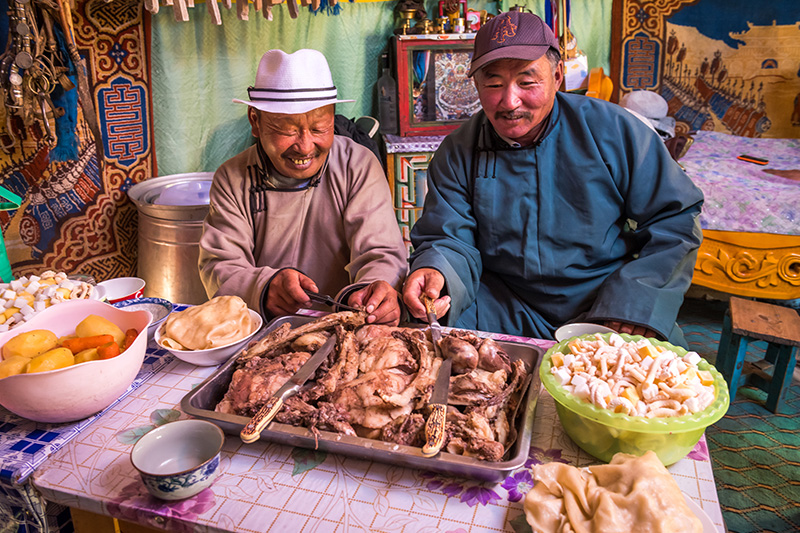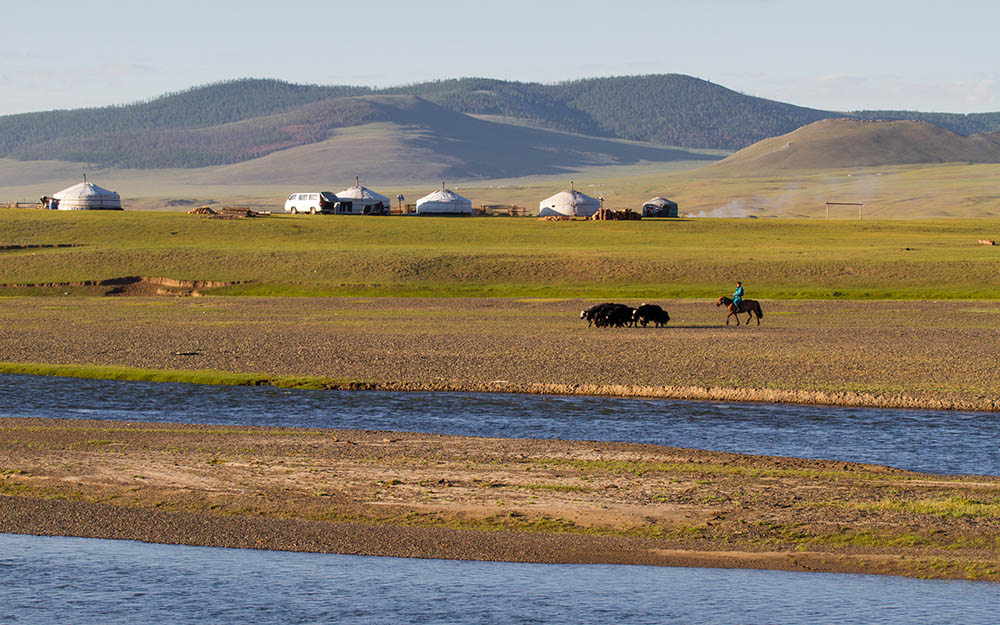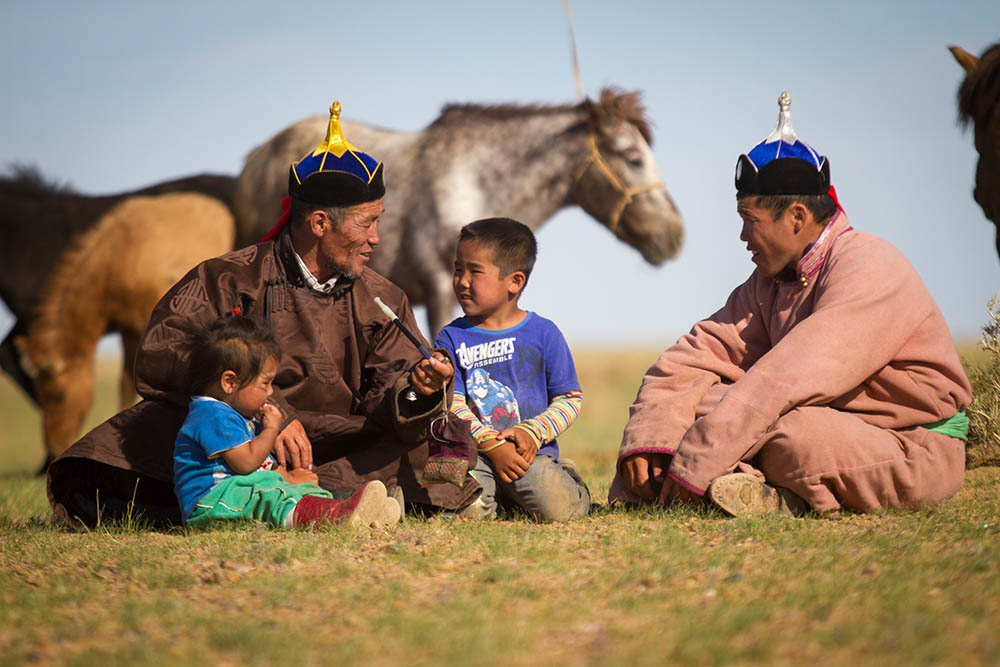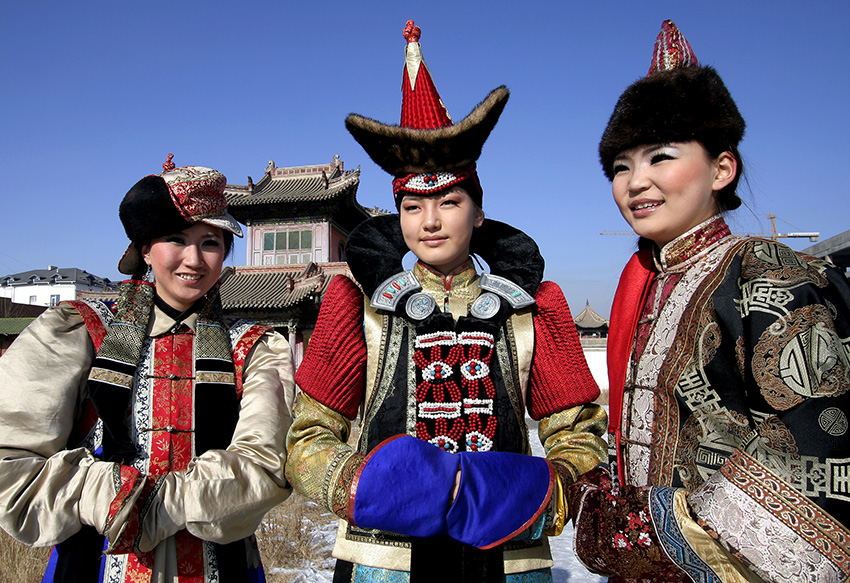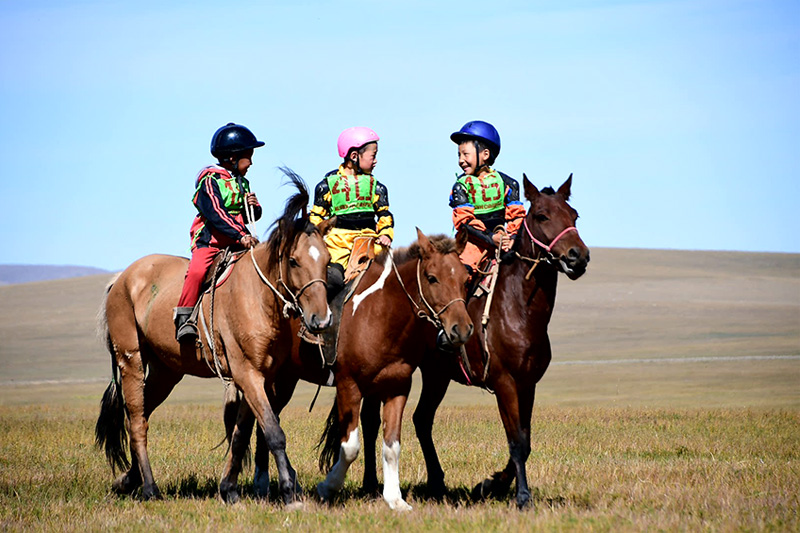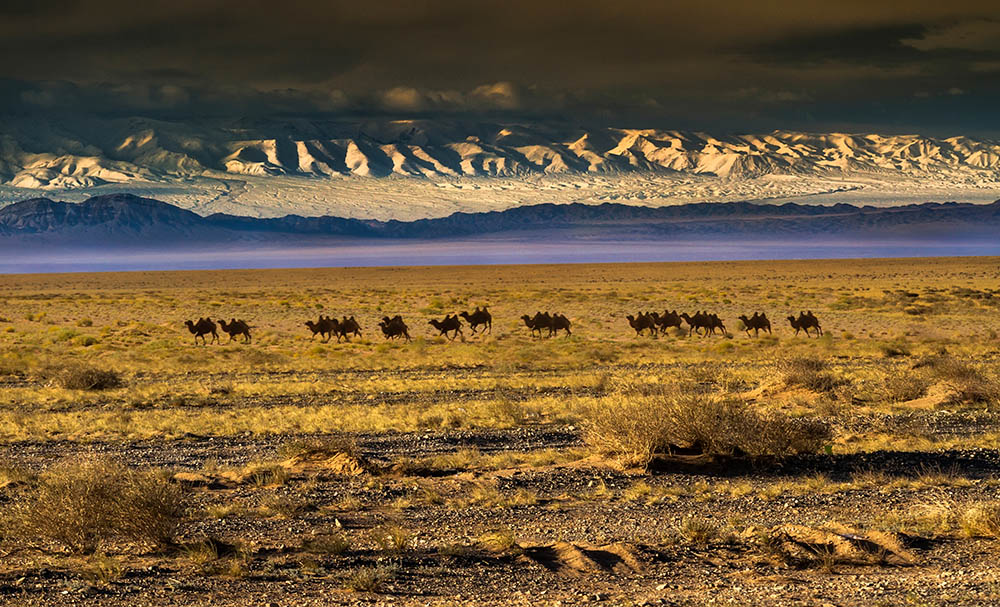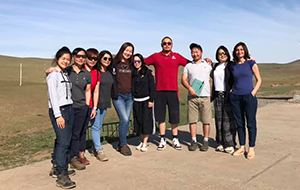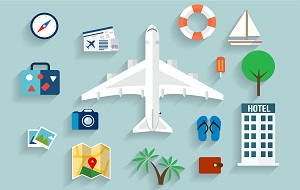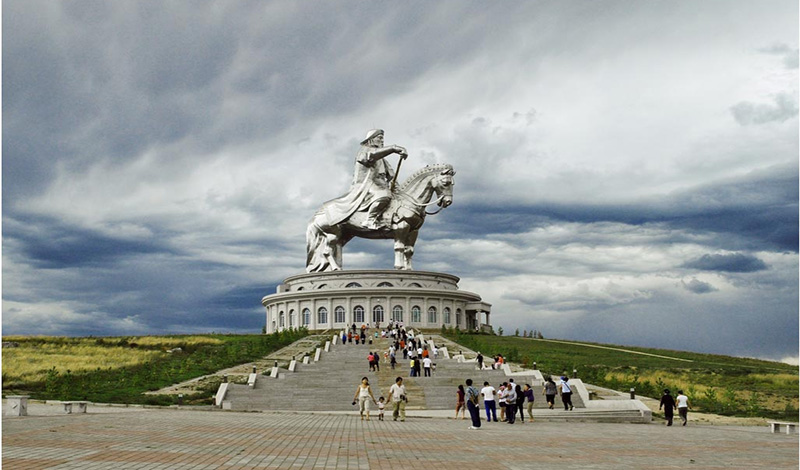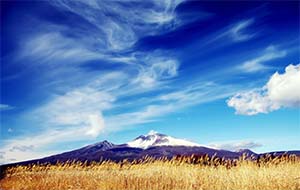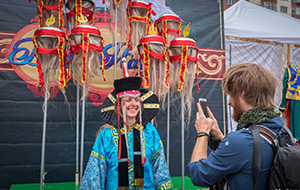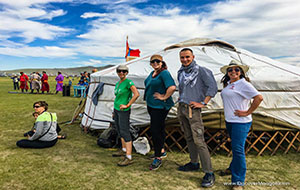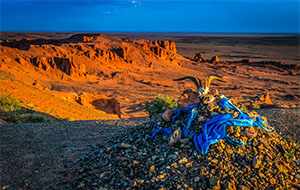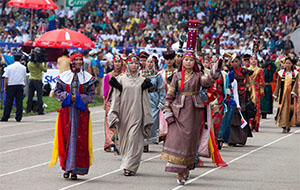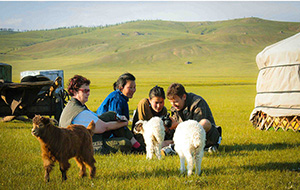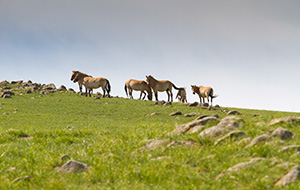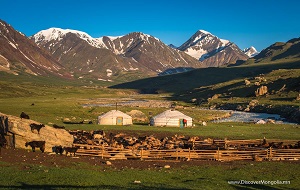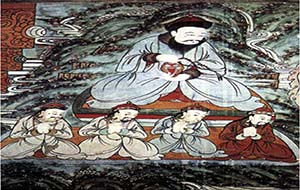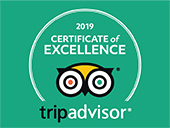When you visit Mongolia, you are one of the rare souls who gets to experience a simple and authentic way of life that has survived for thousands of years—and that alone is reason enough to come. Of course, there are many more reasons to make Mongolia your next destination—and if you’re searching for reasons to visit this magical place, here are six top tips to you.
1. Mongolia Has a Long and Significant History
Petroglyphs @Altai Tavan Bogd National Park, Western Mongolia
The world’s first confirmed dinosaur eggs, as well as one of the largest dinosaur footprints, were discovered in the Gobi. Anthropologically, humans have lived in Mongolia since at least the Bronze Age; the Havtsgait Valley is renowned for its petroglyphs from that era.
In the 13th century, Chinggis Khan reshaped history, forcing a clash between East and West and commanding the largest contiguous empire the world has ever seen, stretching from the Sea of Japan to the Caspian Sea. Then followed centuries of Chinese rule, beginning with the Manchu-led Qing Dynasty. This ultimately collapsed in the 20th century, when Mongolia declared its independence. A 70-year alliance with the Soviet empire ended in the 1990s, leading to our current democratic state.
When you visit Mongolia, each layer of our distinct cultural history is still present, waiting for you to discover and explore.
2. Mongolia’s Cuisine is Like None in The World
Having lunch with a Local family @Central Mongolia
You might guess that Mongolian cuisine has much in common with Chinese cuisine, but China’s—and Russia’s—influence is less than you’d imagine. Much of Mongolia’s food culture is traced to our extreme climate and nomadic way of life.
Meat and fat from animals, including camel, sheep, goat, cattle, and even horse (which we call the “Five Snouts”), form the basis of our diet.
These are supplemented by rich dairy cream (urum) and soft kefir yogurt, with the occasional vegetables and starches.
Hearty stews and meat-filled dumplings are customary. Traditional Mongolian foods such as khorkhog, a meat stew cooked with hot stones. Boodog, goat or marmot prepared by placing heated stones into the animal’s cavity and cooking the meat from the inside out.
Airag, is our national drink made of fermented mare’s milk are all unique to our country—and made more delicious when shared with a nomadic family around a campfire.
Mongolian barbeque prepared the traditional way offers visitors a unique way to “taste” our amazing country. And all visitors should experience our suutei tsai, the Mongolia salty milk tea.
3. Mongolia Has an Endless Expanse of Unexplored, Pristine Terrain
Nomadic lifestyle @Central Mongolia
The Gobi is a mysterious region, lying in the rain shadow of the Himalayas. It’s a cold desert measuring 500,000 square miles; only 5% is covered in sand dunes. Unlike other desserts, it has abundant plant and animal life. This includes trees, grasses, flowers—and camels, gazelles, wild asses, and snow leopards.
Eastern Mongolia is the land of Chinggis Khan, with endless steppes and glorious mountains, the center of mysterious stories from ancient times. Western Mongolia is known for its spectacular rivers, lakes, and glaciers—and the steep Altai Mountains. It’s also the home of a large concentration of nomadic families, ethnic Kazakhs, who are proud to display their eagle hunting expertise.
Central and northern Mongolia offers a vast panorama of spectacular natural scenery. This area includes wetlands and grasslands, some of which are protected by their status as national parks and UNESCO heritage sites. It’s a birdwatcher’s paradise; there are over 400 species of birds native to Mongolia.
No matter the type of terrain that appeals to you, you’ll find it in abundance in Mongolia.
4. Mongolia is Home to Rare Nomadic Peoples
Meeting with a nomadic family @Central Mongolia
Mongolia is the home of some of the world’s last remaining nomadic cultures, who follow a way of life that extends unbroken over 3,000 years. There are hundreds of thousands of nomads in Mongolia; estimates suggest that between 25% to 40% of our population is nomadic.
There are three main nomadic cultures here:
- The horse nomads who primarily herd sheep and goats on horseback.
- The camel nomads
- The Tsaatan or Dhuka people, whose lives are structured around reindeer.
Tsaatan people rarely slaughter their reindeer, they are used primarily for milk. Reindeer yogurt and cheese are staples of their diet. They also ride the reindeer and use this as pack animals in the taiga forest area. They are extraordinarily uncommon; only a small number of Tsaatan families remain in the world.
Nomad families live in gers, or rounded felt tents, which are still assembled in their centuries-old style. Staying with a nomadic family, learning to milk the animals and make fresh dairy products, eating traditional nomadic food is one of the highlights of a visit to Mongolia.
5. Mongolia's Incredibly Vibrant National Cultural Diversity
The Mongolian Traditional Costume / Its consists of a Deel, Boots, and Accessories /
The name “Mongol” first appeared in our lexicon in the 10th century, but there was no unified “Mongol” culture until Chinggis Khan united the warring tribes and factions in our country in the 13th century.
In fact, even today, our national identity and culture, from our governance to our societal structures are largely related to our nomadic, pastoral lifestyle and the legacy of Chinggis Khan. Although a large majority of the population is ethnic Khalka Mongols, there are many different ethnic minority populations. These include Dorvod, Bayad, Buriad, Dariganga, Zahchin, and Torguud. The largest ethnic minority is Kazakh, which makes up about 4% of the population. Although Shamanism was the largest religion until the 16th century, today, most Mongols are Lamaists, a sect of Tibetan Buddhism.
Prior to the Stalinist period of Mongolian history, there were thousands of Buddhist temples in the country, but some 700 of these were destroyed in the religious purges of that era.
There are still hundreds of monasteries, the oldest of which, Erdene Zuu, dates back to the 1500s. About 4% of the population is Sunni Muslim, mostly the Kazakhs in the west. There are a few thousand Christians in Mongolia by most estimates.
A Mongolian Celebration Should Not Be Missed!
Horse jockeys / The races held during national festivals, including Naadam /
Mongolia’s people love an excuse to celebrate. There are many different festivals and events throughout the year. Naadam is the king of all, however, with a history dating back to the time of the Khans. Naadam celebrates the skills most revered in our country: Horsemanship and horse racing, archery, and wrestling. Naadam is celebrated each year in July.
The Mongol New Year, another major celebration, is called Tsagaan Sar. This occurs sometime between January and March, depending on the lunar phase. Tsagaan Sar preparations begin a month in advance and culminate in feasting and gift-giving—one gigantic party.
Throughout the year, there are also many other regional and seasonal festivals and events. Including the Eagle Hunting Festival celebrated by the Kazakhs. The Winter Snow and Ice Festival, which features sledding, ice skating, sleigh rides, and even ice sumo. The Camel Festival celebrates our rare Bactrian camels and the mysterious Gobi Desert.
6. Mongolia’s Unmatched Biodiversity
Gobi Desert @Southern Mongolia
It’s a common misconception that Mongolia’s extreme climate limits its The Great Gobi National Park is one of the world’s largest biospheres, larger in size than the country of Switzerland. The last of the world’s Bactrian camels live in the Gobi, along with the Gobi bears, the only bears that live in a desert. The Gobi’s extreme climate can range from -40℃ to +40℃ with winds of up to 140 kilometers per hour.
The desert is dotted with oases where agriculture flourishes—tomatoes, carrots, cucumbers, peas, and beans are cultivated. As you can see, there is far more to Mongolia than the casual tourist could possibly imagine. Perhaps this explains why it is such an elusive—and exclusive—place to visit. Although it has been the destination for only the most daring and committed world traveler, Mongolia is far more accessible than ever before.
In fact, there are direct flights from several major international cities now.
- If you dream of discovering somewhere virtually unknown and unexplored, Mongolia is the place for you.
- If your passion is to experience life as it was hundreds, even thousands, of years ago, Mongolia is for you.
- If only the rarest and most unique travel adventures will cure your wanderlust, Mongolia is for you.
Why not contact us today and start planning your tour?









